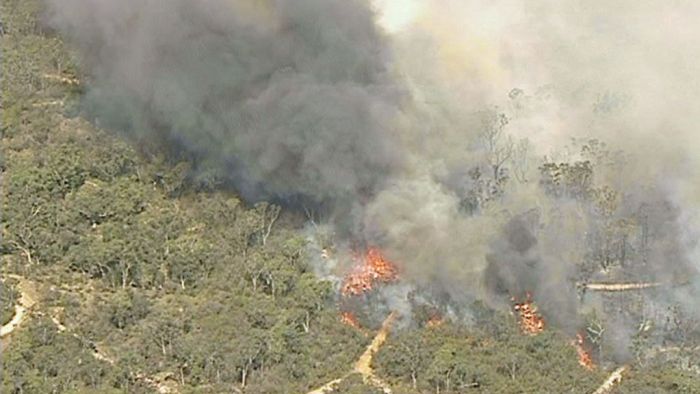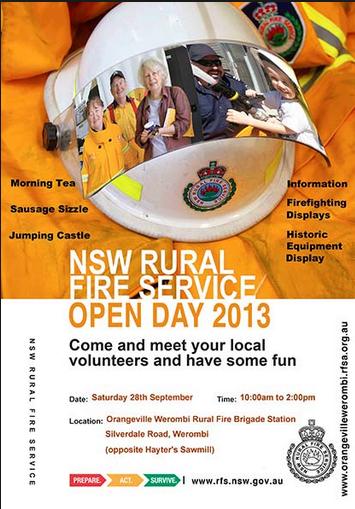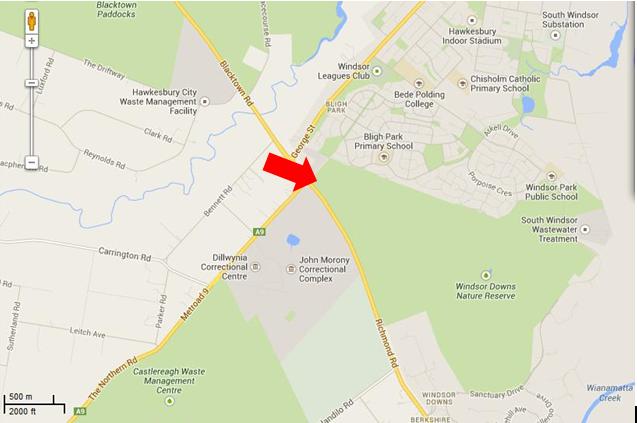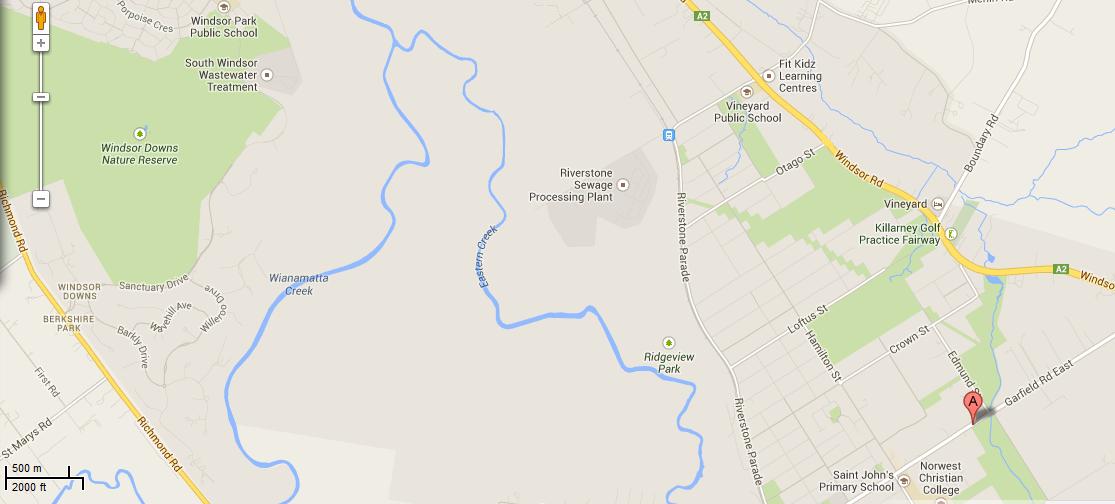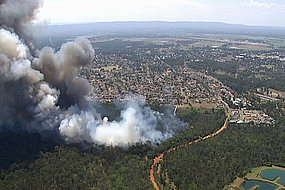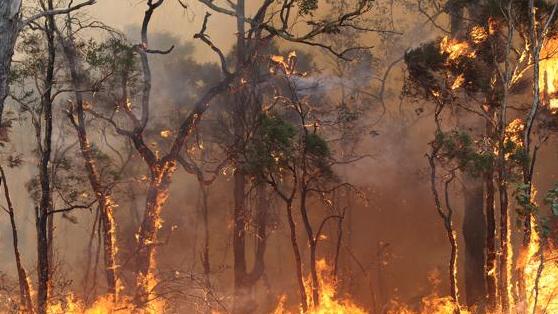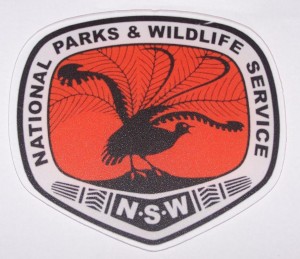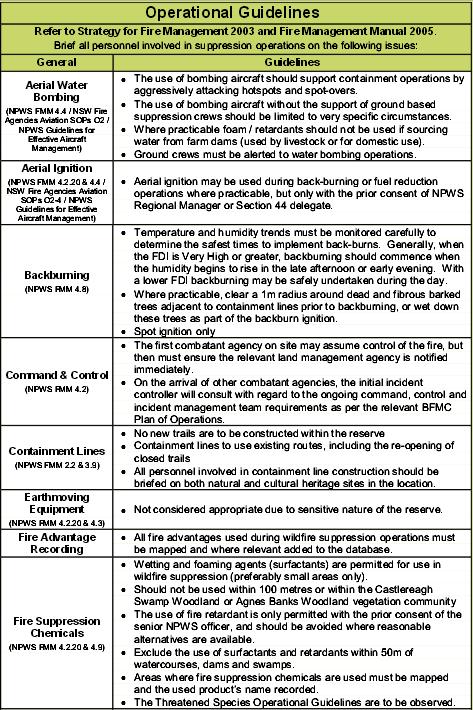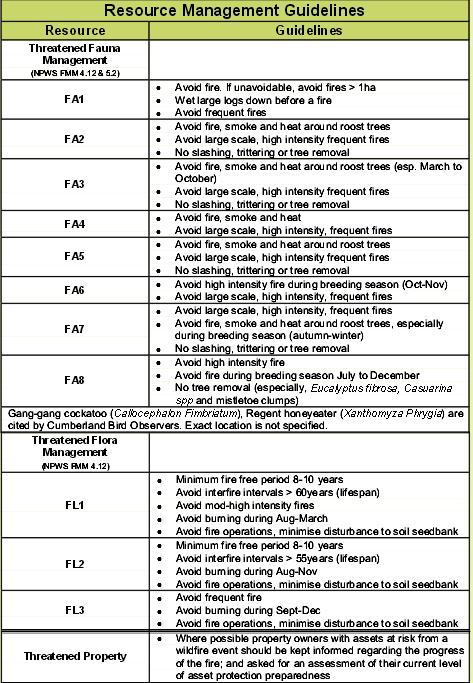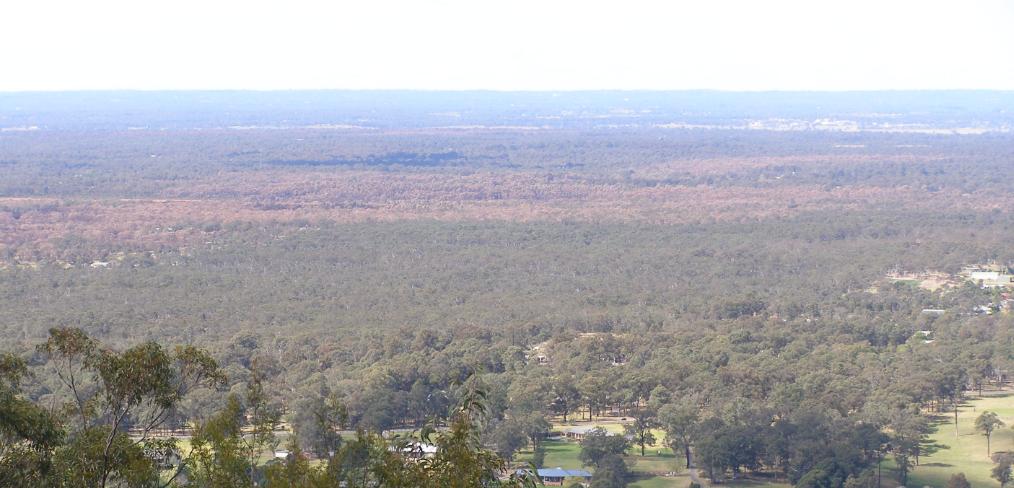Blue Mountains hazard reduction same as arson
Monday, September 30th, 2013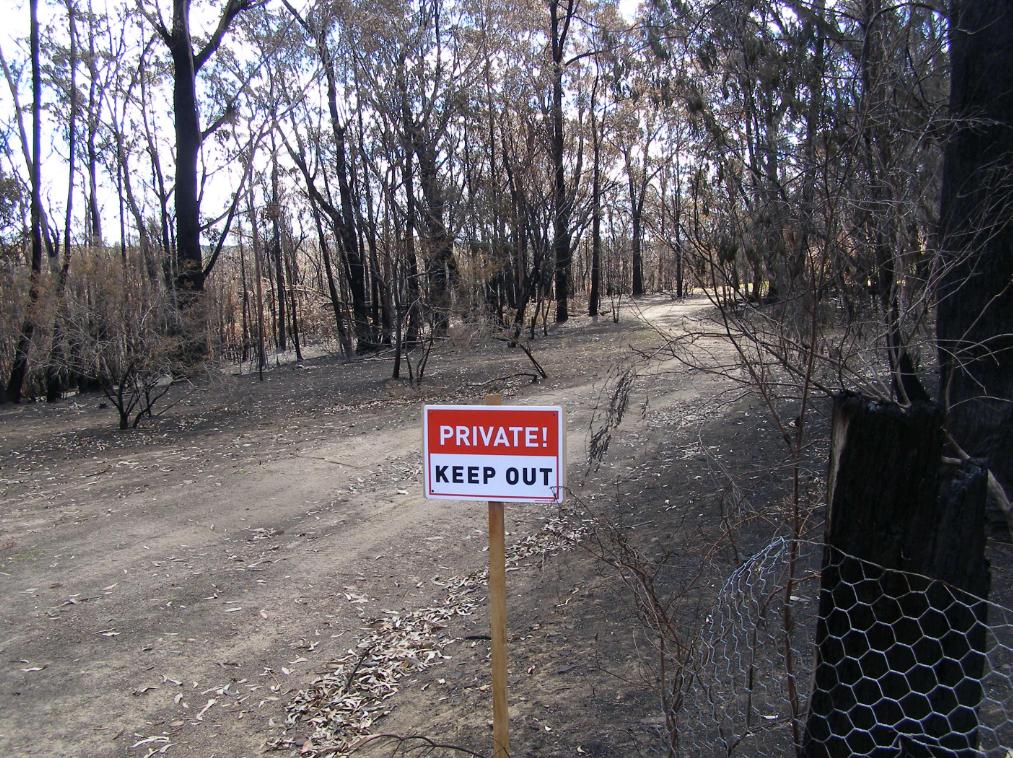 Hawkesbury Heights hazard reduction negligence
Well our fire “escaped”. Sorry, we’re immune from prosecution.
Hawkesbury Heights hazard reduction negligence
Well our fire “escaped”. Sorry, we’re immune from prosecution.[Photo by our Investigator along Hawkesbury Road, Blue Mountains, Australia, 20130921, photo © under ^Creative Commons]
.
Partners in crime: big ego Blue Mountains National Parks with even bigger ego Blue Mountains RFS, have jointly stuffed up big this time.
.
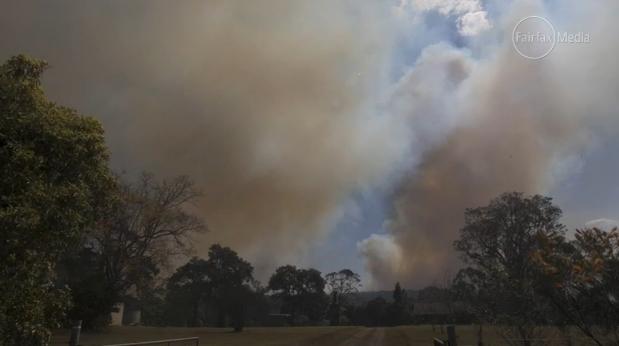 A hazard reduction north of the Hawkesbury Road from the previous weekend was left abandoned.
A few days later the forecast wind picked up and voila: HR come wildfire. Woops.
Sound familiar? Warrumbungles (2013), Macleay River (2012), Grose Valley (2006), Canberra Firestorm (2003)
A hazard reduction north of the Hawkesbury Road from the previous weekend was left abandoned.
A few days later the forecast wind picked up and voila: HR come wildfire. Woops.
Sound familiar? Warrumbungles (2013), Macleay River (2012), Grose Valley (2006), Canberra Firestorm (2003)[Source: Fairfax, ^http://www.smh.com.au/nsw/hazard-reduction-burn-started-major-sydney-bushfire-20130913-2tois.html]
.
Hawkesbury Heights residents will recall last year’s escaped hazard reduction along the Springwood Ridge inside the Blue Mountains National Park. It was left for few days, then the forecast prevailing sou’wester picked up on 30th August 2012. The fire jumped containment lines then threatened the Bowen Mountain community to the nor’ east.
<<More than 30 firefighters from the NSW Rural Fire Service and National Parks and Wildlife Service have worked behind homes in the community of Bowen Mountain to contain this fire. Crews backburned to establish containment lines around the fire with the assistance of helicopters and earth moving machinery.>>
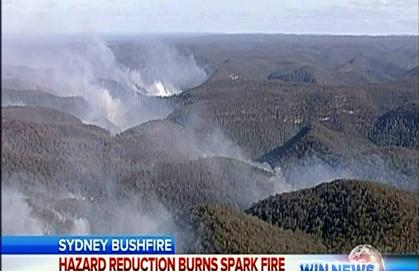 National Park ablaze thanks to government-sanctioned arson
[Source: Blue Mountains RFS, ^http://www.bluemountains.rfs.nsw.gov.au/dsp_more_info_latest.cfm?CON_ID=18199, Reference will probably disappear within days of publication.]
National Park ablaze thanks to government-sanctioned arson
[Source: Blue Mountains RFS, ^http://www.bluemountains.rfs.nsw.gov.au/dsp_more_info_latest.cfm?CON_ID=18199, Reference will probably disappear within days of publication.]
How much did that stuff up cost? This is where donations to the RFS are going.
The Habitat Advocate reconstructs that the HR folly at Hawkesbury Heights two weeks ago probably unfolded as follows:
Blue Mountains National Parks decides that its a good idea to set fire to the Blue Mountains National Park along Shaws Ridge. Shaws Ridge is over two kilometres from the Hawkesbury Road. It has nothing to do with ‘asset protection’ to private properties. So the Parks Service just calls it ‘strategic’ or an ‘ecological burn’ – good for the bush.
“Generally over an 8-12 year cycle it [vegetation] needs to be burnt, which allows it to regenerate.” ~ Blue Mountains RFS district manager David Jones, 20130918.
The bush and its wildlife likes being burnt. Parks Service’s gospel Fire Maps shows in bright red that this part of the protected Blue Mountains National Park (World Heritage Area) hasn’t been burnt for 8 years, so it must to be burned, just in case it burns!
So the fire cult’s mindset is fixated. Parks Service includes the area to its annual hazard reduction burning programme and checks the weather forecast. The Bureau of Meteorology forecasts low winds but with expected changes later in the week. She’ll be right. The job will be over in a day. Parks Service sees the low wind HR window and goes for it.
Parks Service musters up their fire friendly mates at the RFS down at Winmalee and Hawkesbury Heights and complicitous stations. The HR is on! So all the cracks had gathered to the fray. All the tried and noted firies from the stations near and far mustered along Shaws Ridge fire trails. For the firies love the smell of wood smoke along the fire trails and the old red Isuzu’s snuff the battle with delight.
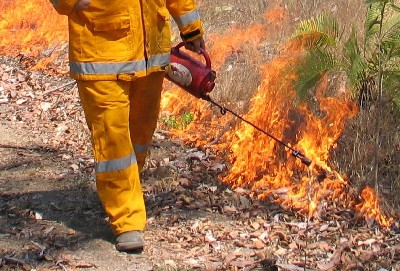 Hazard Reduction: Reducing the World Heritage Hazard
‘Cos see when there’s a real wildfire, Dad’s Army can’t cut the mustard
Hazard Reduction: Reducing the World Heritage Hazard
‘Cos see when there’s a real wildfire, Dad’s Army can’t cut the mustard
.
The hazard reduction proceeds on the Sunday 8th September with hardly a breeze in hilly timbered terrain, using trucks only along ‘fire’ trails. We won’t need choppers. They’ll only blow the budget. Sunday night falls, job done and the vols go home. Monday a bit windy, then Tuesday really warm and the wind picks up, gusty to blazes.
The media reports as follows:
<<A hazard-reduction burn that got out of control sparked one of four major bushfires that ravaged western Sydney and the Blue Mountains this week, fire authorities have revealed.
NSW Rural Fire Service Deputy Commissioner Rob Rogers said the National Parks and Wildlife Service had been conducting a hazard-reduction burn near Hawkesbury Road in Winmalee last weekend, which flared up in Tuesday’s soaring temperatures and high winds. [Ed: Winmalee? Close, but try Hawkesbury Heights further north.]
Rob Rogers:
“Basically it was burnt on the weekend, it was patrolled on Monday, there was smouldering activity. That fire then jumped containment lines [on Tuesday].”
.
 The Parks Service and RFS secretively keep fire operational matters behind closed doors for fear of embarrassment and of being sued.
So our research investigator conducted a post-fire inspection on Saturday 20130921 and has estimated the above impact and scenario.
Perhaps those in charge can prove us wrong? We invited them to.
[Source: The Habitat Advocate, assisted with Google Maps]
The Parks Service and RFS secretively keep fire operational matters behind closed doors for fear of embarrassment and of being sued.
So our research investigator conducted a post-fire inspection on Saturday 20130921 and has estimated the above impact and scenario.
Perhaps those in charge can prove us wrong? We invited them to.
[Source: The Habitat Advocate, assisted with Google Maps]
.
<<Just 10 minutes earlier the family had been told by firefighters to remain calm before a freak wind change sent the blaze roaring uphill towards their house. “Evacuate” was the order.>>
[Source: ‘I put my foot down and drove through the fire’: Mother tells how she fled with children in Winmalee’, 20130911, by Taylor Auerbach, The Daily Telegraph, ^http://www.dailytelegraph.com.au/news/nsw/i-put-my-foot-down-and-drove-through-the-fire8217-mother-tells-how-she-fled-with-children-in-winmalee/story-fni0cx12-1226716604185].
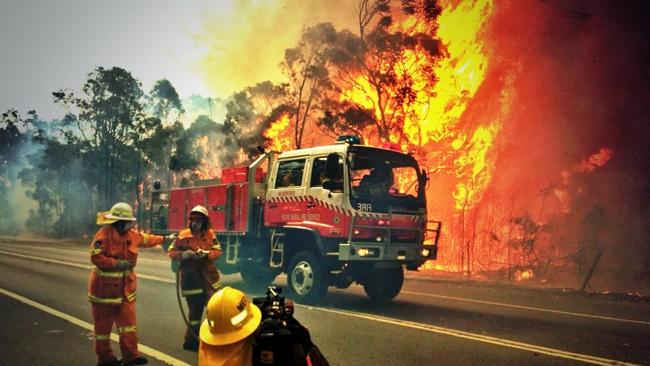 Tackling the Winmalee Hazard Reduction come Wildfire on Hawkesbury Road.
Heroes extinguishing the neglect of their Parks Service cousins.
Tackling the Winmalee Hazard Reduction come Wildfire on Hawkesbury Road.
Heroes extinguishing the neglect of their Parks Service cousins.
.
<<A fire burning in the area of Hawkesbury Road at Winmalee has already claimed one property, with more than 100 firefighters working to contain the blaze. Five firefighters have suffered from smoke inhalation and two received minor burns battling the fire in Winmalee.>>
[Source: ‘Bushfire burns Winmalee home, others at risk in Blue Mountains’, 20130910, Sydney Morning Herald, Photo by Nick Moir, ^http://www.smh.com.au/nsw/bushfire-burns-winmalee-home-others-at-risk-in-blue-mountains-20130910-2ths1.html].
<< Firefighters have contained a blaze that has burnt through more than 1000 hectares of bushland west of Sydney. The fire, at Winmalee in the Blue Mountains, has been burning since Tuesday fanned by high temperatures and strong winds, plunging the region into emergency. Firefighters were still water bombing the burning bushland on Thursday.
The Rural Fire Service on Friday said the fire had been contained.
RFS spokeswoman Laura Ryan:
“It was brought fully under control last night just before a community meeting at Winmalee High School. Firefighters (unpaid) would today work to extinguish the blaze, but said it was too early to say how long that would take. Firefighters will be working hard to get every bit of that fire out.”
The RFS and NSW Police say they have launched investigations into the cause of the bushfire, with some locals raising concerns that recent hazard reduction burns in the area may be responsible. [Ed: NSW Police need not investigate far beyond the operational records of the Blue Mountains National Parks and Wildlife Service, with internal documents circulated to the RFS]
.
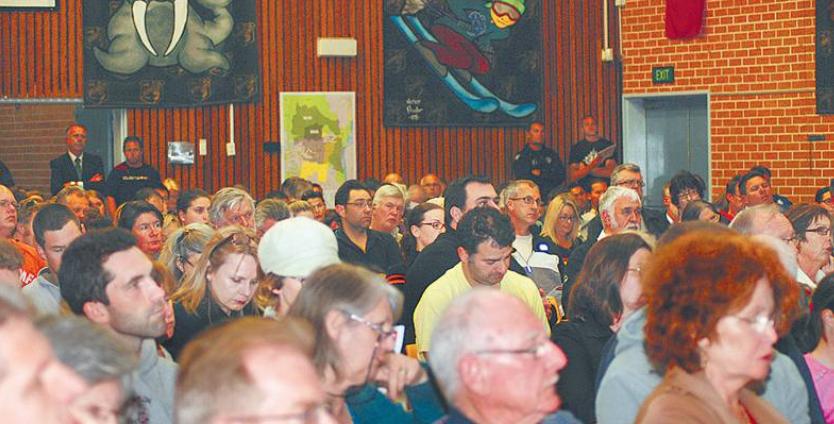 More than 350 Blue Mountains residents pack the Winmalee High School on Thursday night 12th September, fearful whether they could lose their homes to Hazard Reduction.
[Source: ^http://news.ninemsn.com.au/national/2013/09/13/07/00/winmalee-bushfire-contained-rfs]
More than 350 Blue Mountains residents pack the Winmalee High School on Thursday night 12th September, fearful whether they could lose their homes to Hazard Reduction.
[Source: ^http://news.ninemsn.com.au/national/2013/09/13/07/00/winmalee-bushfire-contained-rfs]
.
<< A Rural Fire Service organised community meeting held last week at Winmalee to discuss the fire situation in Winmalee and Yellow Rock was well attended.
Winmalee and Yellow Rock residents aired their bushfire concerns at a community meeting organised by the NSW Rural Fire Service (RFS) at Winmalee High School last Thursday night.
Despite the meeting only being publicised that day, the school hall was nearly full with 350 residents. At least 10 people in the room did not receive an RFS emergency safety warning text message to take shelter.
Blue Mountains RFS district manager David Jones said he would, “feed that back up the line … it may be a service provider issue, I’m not sure, that may be part of it” and that he would look further into the issue.
A Yellow Rock resident asked what hazard reduction burns would take place in Yellow Rock in the near future.
Supt Jones said the weather conditions last week hadn’t been suitable to maintain control of a backburn.
“It’s a one-way, one-road in and its never received the recognition it deserves on that basis in terms of protection,” the Yellow Rock resident said. “I would hate to see a real emergency situation develop here at Yellow Rock.”
Supt Jones said he’d look at the RFS organising a meeting with Yellow Rock residents in the near future to address these issues. Supt Jones said residents could have a fire mitigation officer assess if hazard reduction was needed in their area by lodging a hazard complaint with the RFS.
“Generally over an 8-12 year cycle it [vegetation] needs to be burnt, which allows it to regenerate,” he said.
National Parks and Wildlife Service (NPWS) Upper Mountains area manager Richard Kingswood said there weren’t many days a year suitable for conducting hazard reduction burns — only 10 days in the Upper Mountains and a few more in the Lower Mountains, although last autumn and spring had provided more opportunities. He said in the last financial year NPWS had initiated 38 burning operations over 50,000 hectares, which was more than usually occurred.
Another resident asked why, with safety concerns with overhead powerlines, they couldn’t go underground, especially as the highway was being widened. An Endeavour Energy spokesman said cost was an issue. “It costs about 10 times more to put mains underground.”
Others were concerned about issues around road blocks, where children as well as adults were allowed to walk past roadblocks to return home, yet people couldn’t get their vehicles through. It didn’t make sense from a safety perspective, the resident said.>>
[Source: ‘Concerns aired at Winmalee fire meeting’, 20130918, by Ilsa Cunningham, Blue Mountains Gazette, ^http://www.bluemountainsgazette.com.au/story/1782194/concerns-aired-at-winmalee-fire-meeting/].
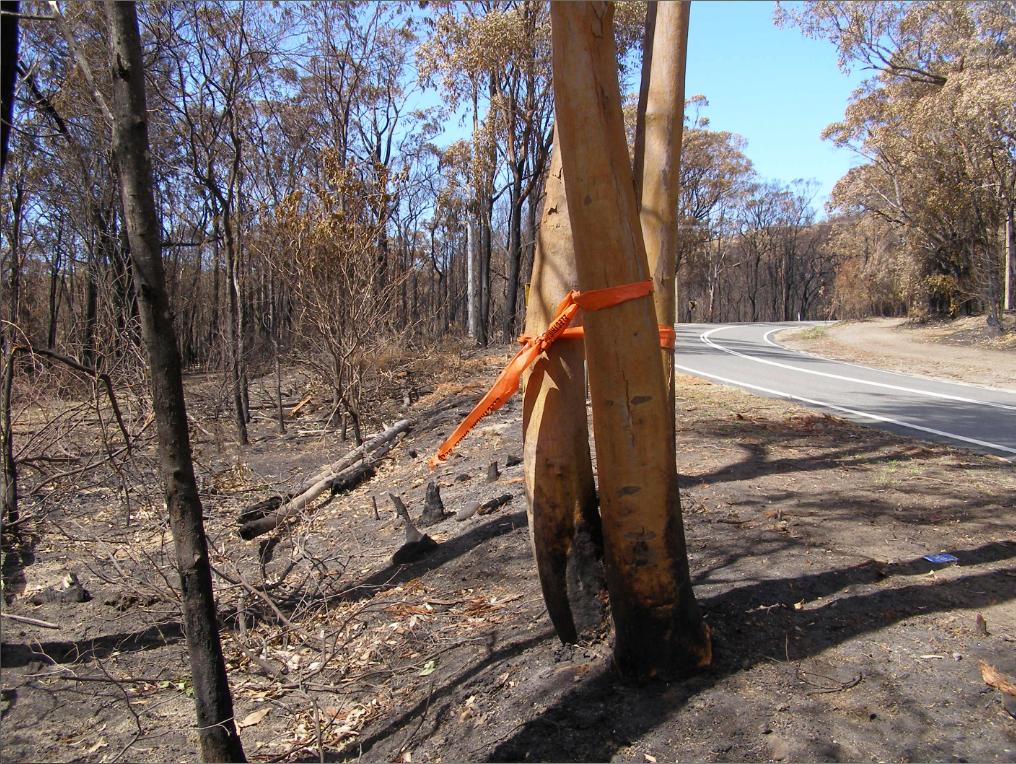 Hawkesbury Road well and truly hazard reduced
[Photo by our Investigator along Hawkesbury Road, Blue Mountains, Australia, 20130921, photo © under ^Creative Commons]
Hawkesbury Road well and truly hazard reduced
[Photo by our Investigator along Hawkesbury Road, Blue Mountains, Australia, 20130921, photo © under ^Creative Commons]
.
<< More than 1200 firefighters were involved in battling the four major fires on Tuesday along Hawkesbury Road in Winmalee; in Marsden Park in the Blacktown area; near Tickner Road in Castlereagh; and Richmond Road at Windsor. Fourteen helicopters and 350 trucks from the Rural Fire Service, Fire and Rescue NSW and the National Parks and Wildlife Service were involved in the firefight.
Just before 1.30pm on Tuesday, the temperature in Sydney was 31.6 degrees. Mr Rogers said strong wind also made fire conditions worse, with gusts reaching 90 kilometres an hour, which was much higher than forecast.
He said RFS firefighters helped in the hazard-reduction operation in Winmalee, which was under the supervision of the NPWS, and he apologised to anyone who experienced property damage.
“Combined with the winds, how dry it is, the temperature and the steep terrain, fire takes hold very, very quickly.”
He said the RFS also was investigating whether a hazard-reduction burn escaped and forced the closure of the M1 (formerly the F3) Motorway on Thursday.
“You would have to obviously be suspicious that it did come from a hazard-reduction, given that it was in a very close proximity to it. That’s something that we’re going to be looking at very, very closely,” he said.>>
<<Fire authorities have issued an emergency warning for a bushfire threatening homes in Castlereagh in Sydney’s west, and alerts for other out of control bushfires in Blacktown and Hawkesbury.
NSW Rural Fire Service Deputy Commissioner Rob Rogers said National Parks and Wildlife Service had been conducting a hazard reduction burn near Hawkesbury Road in Winmalee last weekend. The fire flared with Tuesday’s soaring temperatures and high winds.
..He apologised to anyone who experienced property damage from the Winmalee fire. ”..It appears on first look that it’s a case of the weather was worse than was predicted, the fire jumped out, it took hold really..quickly.” >>
Even though the fire ripped through Hawkesbury Heights, the National Parks and Wildlife Services has released a public notice asking any Winmalee residents who experienced property damage or loss have been urged to contact NPWS on 1300 361 967 for sympathy and counselling.
New South Wales Rural Fire Service (paid) Deputy Commissioner Rob Rogers has said that his (unpaid) RFS firefighters helped in the hazard-reduction operation in Winmalee, which was under the supervision of the NPWS, and he apologised to anyone who experienced property damage.
.
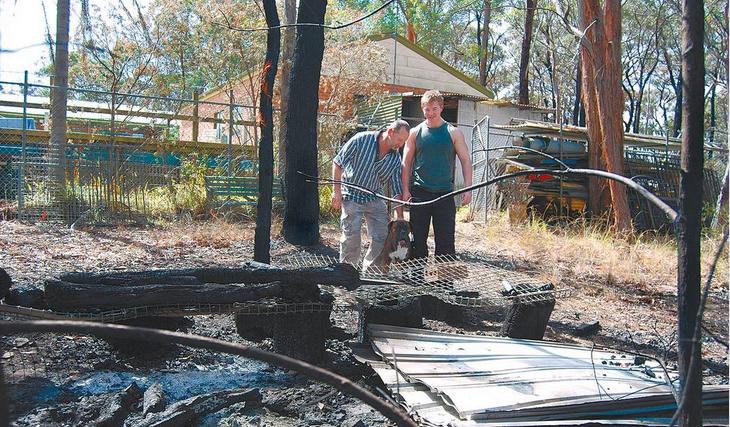 RFS: Sorry about that
Property loss at Hawkesbury Heights (Wheatley Road?) but who pays?
Owner: “we won’t need hazard reduction for a while.”
[Source: ‘Bushfire wake-up call’, 20130918, by Shane Desiatnik,
^http://www.theleader.com.au/story/1782048/bushfire-wake-up-call/]
RFS: Sorry about that
Property loss at Hawkesbury Heights (Wheatley Road?) but who pays?
Owner: “we won’t need hazard reduction for a while.”
[Source: ‘Bushfire wake-up call’, 20130918, by Shane Desiatnik,
^http://www.theleader.com.au/story/1782048/bushfire-wake-up-call/]
.
[Sources: ‘Hazard reduction burn started major Sydney bushfire’, by Megan Levy, 20130913, ^http://www.smh.com.au/nsw/hazard-reduction-burn-started-major-sydney-bushfire-20130913-2tois.html; and ‘Burn-offs and arson suspected as cause of two bushfires’, by Megan Levy and Peter Hannam, 20130914, ^http://www.smh.com.au/nsw/burnoffs-and-arson-suspected-as-cause-of-two-bushfires-20130913-2tq15.html].
National Parks and Wildlife Advisory Council Report
(42nd meeting held on 28-29 May 2013)
.
<< Council noted the following details regarding the current status of fire management activity by NPWS:
- The 135 000ha annual target has been met with a total of 176 000ha now treated.
- Almost 3 times more area treated than the average for last five years.
- 6-7000ha hazard reduction activity planned over the next week.
- Opportunity to increase positive community profile for NPWS.
- Statewide strategy with performance indicators in place at state and regional levels. >>
.
[Source: New South Wales Government, NSW National Parks and Wildlife Service, ^http://www.environment.nsw.gov.au/resources/about/NPWAdvisoryCouncMay2013.pdf].
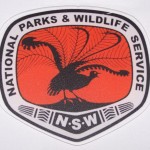 In Parks we Trust
In Parks we Trust
.
In New South Wales the National Parks and Wildlife Act became law on 1 October 1967. The legislation created a single agency, the National Parks and Wildlife Service, to care for, control and manage the original nineteen parks and any new ones created in the future.
.
.
.
Further Reading:
.
[1] ‘NPWS Fire Fighters Recognised for Service as NSW Gets 10 Year Fire Plan‘, 20130422, NSW Government, ^http://www.environment.nsw.gov.au/resources/MinMedia/MinMedia13042201.pdf
>Download Document (PDF, 2 pages, 36kb)
.
[2] ‘National Parks and Wildlife Advisory Council Report‘, 42nd meeting held 20130528-29, NSW Government, ^http://www.environment.nsw.gov.au/resources/about/NPWAdvisoryCouncMay2013.pdf
>Download Document (PDF, 1 page, 29 kb)
.
[3] ‘Fire Management Manual, 2012-2013‘, NSW National Parks and Wildlife Service, NSW Government, ^http://www.environment.nsw.gov.au/resources/firemanagement/final/OEH20120645FireMgmtManual.pdf
>Download Document (PDF, 223 pages, 1.0 MB)
.
[4] ‘Blue Mountains National Park Plan of Management‘, May 2001, NSW National Parks and Wildlife Service, ^http://www.environment.nsw.gov.au/resources/parks/pomfinalbluemountains.pdf
>Download Document (PDF, 108 pages, 750 kb)
.
[5] ‘Greater Blue Mountains World Heritage Area – Strategic Plan‘, January 2009, Department of Environment and Climate Change (NSW) with funds supplied by the Australian Government, ^http://www.environment.nsw.gov.au/resources/parks/StategicPlanNPWS.pdf
>Download Document (PDF, 58 pages, 5.4 MB)
.
[6] ‘National parks and forest conservation‘, 2006, by Brett J. Stubbs, School of Environmental Science and Management, Southern Cross University, Lismore, New South Wales ^http://fennerschool-associated.anu.edu.au/environhist/links/publications/anzfh/anzfh1stubbs.pdf
